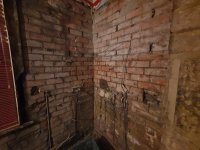Hello guys
Bit of advice please
Were replastering our old victorian kitchen.
Taken it back to brick, took off gypsum plaster internal which was D+D to old cement type plaster on external wall(which im assuming is lime plaster)
Double brick no cavity
Its on the 1st floor. No damp on walls.
Ive read so much advice on how to tackle it that im paralyzed with confusion
Dot and dab
Insulate
Batten
Thermal boards etc
Vapour proof
Cold bridges
???
Any ideas on how to tackle it so we avoid condensation and cold spots and damp etc etc much appreciated
Thanks
Bit of advice please
Were replastering our old victorian kitchen.
Taken it back to brick, took off gypsum plaster internal which was D+D to old cement type plaster on external wall(which im assuming is lime plaster)
Double brick no cavity
Its on the 1st floor. No damp on walls.
Ive read so much advice on how to tackle it that im paralyzed with confusion
Dot and dab
Insulate
Batten
Thermal boards etc
Vapour proof
Cold bridges
???
Any ideas on how to tackle it so we avoid condensation and cold spots and damp etc etc much appreciated
Thanks


